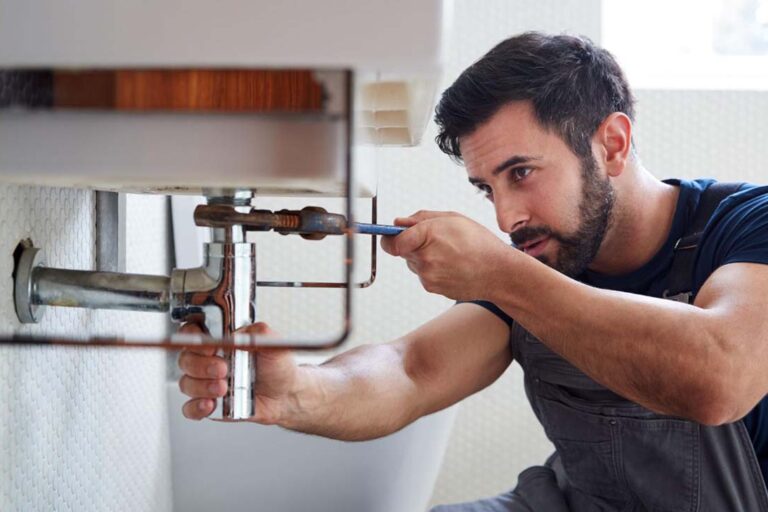Just about everyone will have their own unique idea with regards to When to Call a Plumber? DIY or Professional Help.

Introduction
Pipes problems can vary from minor aggravations to major headaches, typically motivating property owners to determine between dealing with the trouble themselves or hiring a specialist plumber. Knowing when to DIY and when to seek professional aid can save time, money, and avoid prospective catastrophes. This short article checks out the elements to think about when making this important decision.
Benefits of Do It Yourself Plumbing
Taking on plumbing jobs on your own can be satisfying in a number of ways, specifically for easier tasks.
Intricacy of Tasks
Some pipes problems require customized understanding and devices past typical home owner capabilities. Mishandling complicated problems can bring about additional damages and costly repairs.
Safety and security Problems
Dealing with plumbing systems includes threats such as exposure to water damage, possibility for electrical dangers, and handling tools improperly. Safety and security precautions should be observed to avoid crashes and ensure effective repairs.
Indicators to Call a Professional Plumbing Technician
Identifying when a pipes problem surpasses DIY abilities is critical to stop intensifying problems.
Signs of Facility Concerns
Instances include:
Motivate expert intervention is essential to attend to these issues properly and decrease damage.
Do It Yourself Plumbing Tips
For effective DIY pipes, it's essential to be prepared with the right tools and follow proper treatments.
Basic Tools and Products
Secret devices for do it yourself pipes:
Step-by-Step Guides
Clear guidelines make certain risk-free and effective do it yourself repair services:
Choosing the Correct Time to Do It Yourself
Identifying when to deal with pipes jobs yourself needs assessing both the complexity of the problem and individual convenience degrees.
Assessment Checklist
Think about:
Price Financial savings
Do it yourself pipes tasks usually conserve cash by preventing specialist service charge. Tasks like dealing with minor leakages, replacing faucets, or mounting new showerheads are instances where homeowners can manage repairs without employing a plumbing technician.
Ability Enhancement
Participating in do it yourself pipes offers a possibility to discover and boost functional abilities. Standard tasks encourage home owners to comprehend their pipes systems better and obtain confidence in handling little repair services individually.
Dangers of DIY Pipes
While do it yourself jobs offer advantages, specific risks need to be meticulously thought about before trying repairs.
When to Most Definitely Call an Expert
Particular circumstances demand prompt professional focus to prevent substantial damage or security threats.
Emergency Scenarios
Examples include:
Finding and Employing an Expert Plumbing Professional
Choosing a certified plumbing ensures trusted service and assurance in resolving pipes issues.
Requirements for Selection
Aspects to consider:
Price Evaluation: do it yourself vs. Expert Solutions
Contrasting the financial ramifications of DIY initiatives versus expert pipes solutions helps in making educated decisions.
Financial Considerations
Review:
Conclusion
Making a decision whether to do it yourself or call a specialist plumber depends upon comprehending the intricacy of pipes problems and individual abilities. By evaluating the advantages and dangers, homeowners can make enlightened options that advertise efficient upkeep and safeguard their homes from pipes catastrophes.
DIY Plumbing Projects: What Homeowners Can Do and When to Call a Professional
Welcome to our comprehensive guide on DIY plumbing projects. In this blog post, we aim to empower homeowners with the knowledge and skills to tackle basic plumbing tasks around the house. From unclogging drains to fixing a leaky faucet, we’ll walk you through step-by-step instructions on how to handle these common issues.
However, not all plumbing problems can or should be solved with a DIY approach. Recognizing when a problem is beyond your skill level and requires professional intervention is just as important as knowing how to perform basic tasks. We’ll also discuss the signs that indicate it’s time to put down your tools and pick up the phone to call a professional plumber. By understanding when to DIY and when to call a professional, you can save time, avoid potential disasters, and ensure your home’s plumbing system remains in top shape.
Understanding Plumbing Basics
Before we dive into the DIY projects, let’s take a moment to understand the basics of your home’s plumbing system. A typical residential plumbing system consists of two major components: the water supply system, which brings fresh water into your home, and the drainage system, which removes waste water. These systems are made up of a network of pipes, valves, and fixtures that work together to deliver clean water and dispose of waste efficiently.
Regular maintenance of your plumbing system is crucial to prevent minor issues from escalating into major problems. This includes tasks like checking for leaks, removing minor clogs, and ensuring your pipes are insulated for winter. By performing these tasks regularly, you can extend the lifespan of your plumbing system, save money on water bills, and maintain the comfort and hygiene of your home.
In the following sections, we’ll explore some common DIY plumbing projects that homeowners can handle, as well as situations that require the expertise of a professional plumber. Whether you’re a seasoned DIY enthusiast or a beginner, this guide will provide you with valuable insights into the world of home plumbing.
DIY Plumbing Projects Homeowners Can Handle
Plumbing may seem intimidating, but there are several tasks that homeowners can confidently tackle with a little guidance and the right tools. Here are a few common issues you might encounter and how to address them.
Unclogging Drains
Use a Plunger: This is your first line of defense. A good old-fashioned plunger can dislodge the obstruction and clear the drain in many cases. Try a Plumber’s Snake or Hand Auger: If the plunger doesn’t work, a plumber’s snake or hand auger can reach deeper into the pipe to break up the clog. Use a Drain Cleaner: If physical methods fail, a chemical drain cleaner can dissolve the clog. However, use these products sparingly as they can damage your pipes if overused.

I recently found that piece about DIY Plumbing Projects and When to Call a Professional while doing a lookup on the web. So long as you liked our blog entry please consider to pass it around. Thanks for going through it.
Book Service Now
 Mr. T Then & Now!
Mr. T Then & Now! Alana "Honey Boo Boo" Thompson Then & Now!
Alana "Honey Boo Boo" Thompson Then & Now! Michael J. Fox Then & Now!
Michael J. Fox Then & Now! Kenan Thompson Then & Now!
Kenan Thompson Then & Now! Danielle Fishel Then & Now!
Danielle Fishel Then & Now!